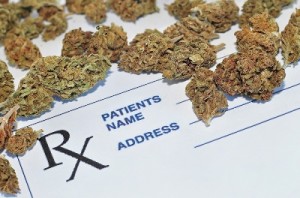 Historical Use
Historical Use
The marijuana plant has long been used in medicine as well as in religious rituals for most of pre-historical, medieval and modern history. It has been described in medical texts from China and India as early as 3000 years ago.
The indigenous people of South American have used marijuana in rituals as well as in medicine. In the US, as late as the 1930s, the use of marijuana as a mild sedative and pain reliever was so pervasive that it was taxed. It was only in 1951 that it was declared by law as a drug that was of no medical use and can be potentially abused.
Problems in using marijuana as medication:
Marijuana alters the mood and it alters the brain chemistry. It has always been thought of as containing medicinal properties. However, there are problems with using marijuana for medicinal purposes:
- There are so many different strains and varieties of the marijuana plant. Each variety and strain contains different chemical components, in varying amounts and mixtures. Different parts of the marijuana plant have also different chemical components. In order to use marijuana effectively as medication, the components must be isolated and tested separately and discretely in order to test their value and effects as medicine and the predictability of its therapeutic effect.
- There is also a variety of ways by which marijuana can be administered. It can be inhaled or smoked. It can be ingested as oil, extract, or as dried leaves which is then made into tea or incorporated into cooked or baked food. It can be dried and ground up and made into pills. The dosage of the chemical properties which make up marijuana cannot always be determined as it depends on which part of the marijuana plant is used, how it is processed, and how it is administered.
- It is still listed and classified as a schedule 1 drug, meaning that it is probably habit forming and thus, dangerous for humans in the long-term. It is thus illegal in some states, while legal in other states.
Active Compounds
Despite these problems, researchers have succeeded in isolating the most active compounds in marijuana which are known as THC and CBD. These have been variedly tested and experimented upon. And their efficacy has been proven although the tests have not been extensive or on a large scale. There have not yet been randomized controlled trials of such a scale as to definitively lead to the approval of marijuana as a medication.
What do we know about the efficacy of THC and CBD?
- THC is effective in controlling nausea and vomiting. It has been proven so effective in controlling the nausea and vomiting associated with chemotherapy in cancer treatment that these compounds have been available in pill form by prescription as dronabinol since 1985.
- THC is effective when smoked by HIV/AIDS and cancer patients as it increases appetite.
- THC and CBD when combined (as it is in Canada) have been shown to lessen muscle spasticity and seizures in persons suffering from multiple sclerosis.
- The THC and CBD in smoked marijuana have also been found to lessen the pain suffered by patients with nerve neuropathy.
- THC and CBD, when combined, create a powerful pain reliever for those suffering from cancer.
Are there Risks?
As with any medications, there is always risk of side effects, complications, counter-indications and its effects when combined or taken alongside other medications.
THC is a known narcotic and hallucinogen. It alters consciousness and mood. It alters a person’s perception of reality and it impairs one’s judgment and coordination making it difficult and dangerous to operate machinery if a person were to take marijuana medically. In some people, THC triggers paranoia and/or euphoria, increased heart rates and palpitations.
Others experience an alteration of their perception of space and time; others show impairment of cognitive skills, memory loss, confusion, anxiety and sleepiness. Drugs derived from marijuana have been reported to cause complications such as decrease in blood pressure, dizziness or lightheadedness and fainting.
In some people, it has been shown to worsen symptoms of depression, anxiety and mania.
There has been no clear medical finding as to whether people can overdose on marijuana, but, proponents have been quick to cite that there has never been any news saying that any person has died of an overdose of marijuana.
When marijuana is smoked, the smoke introduces into the lungs comparable types of irritants and other carcinogens as cigarette smoke. Thus, the dangers posed to smokers of marijuana have not yet been fully explored.
The question of whether marijuana creates a dependency, and can thus be addictive, is still debated. Also, the question of whether or not withdrawal symptoms occur when a person stops taking marijuana is also not yet clearly determined.
Marijuana has been legalized for recreational purposes as well as medicinal purposes in 23 states in the United States, including, California, Arizona and others.
However, as there are still no definitive studies on the efficacy and risks of marijuana; or how best to administer it (smoked, eaten, drunk or as pill form), the decision to take medicinal marijuana is still a choice of the patient.


